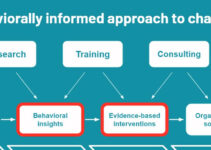ITIL (Information Technology Infrastructure Library) change management is a widely used framework in the IT industry. It focuses on offering a well-structured and systematic approach for planning, testing, analyzing, and executing the changes in a controlled and authorized way. Today, we’ll discuss ITIL change roles and responsibilities; key steps involved in the process, and their roles and responsibilities.
The ITIL framework comprises of set of practices and strategies for managing and dealing with IT services. It offers you a systematic method for managing, designing, improving, and delivering the quality of IT services. However, the ITIL framework is a process-based systematic approach and it offers you the lifecycle of IT services ranging from designing to implementation.
Process of ITIL Change Management
The process of ITIL change management within the ITIL framework would ensure the implementation of changes in the IT infrastructure and system using controlled and authorized methods. The objective of ITIL change management is to reduce IT service disruption and streamline the changes with the company’s objectives.
ITIL Change Request
The process of ITIL starts when the individual or the group sends the change request to implement the changes within the IT system or infrastructure. The change request comprises details about the proposed changes, reasons for the change project, and the potential impact of IT services.
Reviewing Change Request
The change advisory board (CAB) and the stakeholders would review and evaluate the change request. The analysis comprises evaluating and monitoring the impact of changes on the IT services, the likelihood of success, and the risks attached to the change project.
Approving Change Request
After the approval of the change request, the team would develop the plan and execute the changes. It comprises recognizing the available and required resources, developing the timeline for the changes, testing, and validation before the execution of changes.
Implementing Changes
After executing the changes, the company would review and analyze the success rate of the change plan and recognize the key areas for improvement. It comprises gathering feedback from multiple stakeholders like the affected parties and the change owners, and it helps you to update the change management processes.
ITIL Change Management Roles and Responsibilities
Let’s discuss the ITIL change management roles and responsibilities and they’re as follows;
Change Manager
The role of the change manager in an ITIL change project is to manage, coordinate, and collaborate with all the change processes. They have the obligation of making sure that implementing changes to the IT system and infrastructure in a controlled and authorized manner and they streamline with the company’s goals and objectives. Some of the main responsibilities of the change managers are as follows;
- Reviewing and analyzing the change requests to recognize their impact on the IT services and its success rate; evaluate the risks attached to the change project.
- Collaborating with the CAB and the stakeholders to develop a plan for executing the changes; recognizing the required resources and the timeline to complete the project.
- Coordinating with the change implementer for the execution of changes to ensure it goes as planned
- Monitoring the progress of the change progress and ensuring it goes as planned
- Reviewing the executed changes to analyze its success rate by gathering feedback from stakeholders
- Maintaining the change management processes by conducting training programs and updating procedures
CAB – Change Advisory Board
The role of the change advisory board is to review and approve the changes to the IT infrastructure and system by making sure that it streamlines with the company’s goals and objectives. The CAB is a part of a cross- a functional team comprising of representatives from various units like business, operations, functions, IT, HR, and others. However, some of the main responsibilities of CAB are as follows;
- Review the change requests and their impact on the IT services and their success rate
- Approving and rejecting the change requests and ensuring that it streamlines with the company’s goals and objectives
- Prioritizing the change request based on its impact
- Analyzing the potential risk factors relevant to the change projects
- Reviewing the changes after executing and analyzing its success rate by gathering feedback from multiple stakeholders
Change Initiator
The role of the change initiator is to launch the change management process by sending the change request. It comprises individuals and groups who recognize the need for changes in the IT infrastructure and system. However, some of the main responsibilities of a change initiator are as follows;
- Recognizing the need for changes in the IT system due to the problems in the existing system or the availability of potential opportunity
- Sending the change request by adding all the details of the change project and reasons for changes
- Offering additional information to the change management team
- Change initiators should collaborate with various stakeholders like CAB, the change manager, and others.
- Reviewing the changes after implementing them and analyzing their success rate by gathering feedback from various stakeholders
Change Implementer
The role of the change implementer is to execute actual changes in the IT infrastructure and the system. They have the obligation to execute changes as planned by streamlining them with the company’s goals and objectives. Some of the main responsibilities of a change implementer are as follows;
- Implementing changes in the IT infrastructure and system after testing and validating the changes
- Coordinating with various stakeholders like change initiator, CAB, and change managers to make sure that it goes as planned
- Communicating the status of the change project and offering updates to various stakeholders
- Recognizing the potential risk factors relevant to the change project and taking steps to reduce it
- Reviewing the changes after executing and preparing of change processes
The Change Owner
The role of the change owner is to take responsibility for the success rate of the change project and streamline it with the company’s goals and objectives. The change owners are the business leaders and the senior managers and they have the obligation of implementing changes and deciding relevant to the change project. However, some of the main responsibilities of change owners are as follows;
- Defining the business goals and objectives of the change project
- Reviewing and approving the change requests and making sure that it is relevant to the company’s goals
- Prioritizing the change requests based on its impact and the urgency
- Managing the change processes and making sure that they’re relevant to the company’s plan
- Communicating with various stakeholders to ensure that the execution of change processes as planned
Conclusion: Roles and Responsibilities of ITIL Change Management
After an in-depth study of the ITIL change management roles and responsibilities; we have realized that ITIL change management is significant for IT changes. If you are learning about the roles and responsibilities of ITIL change management, then you should keep in mind the abovementioned steps involved in the process, and various roles and responsibilities.
Ahsan is an accomplished researcher and has a deep insight in worldly life affairs. He goes Live 3 days a week on various social media platforms. Other than research writing, he’s a very interesting person.


